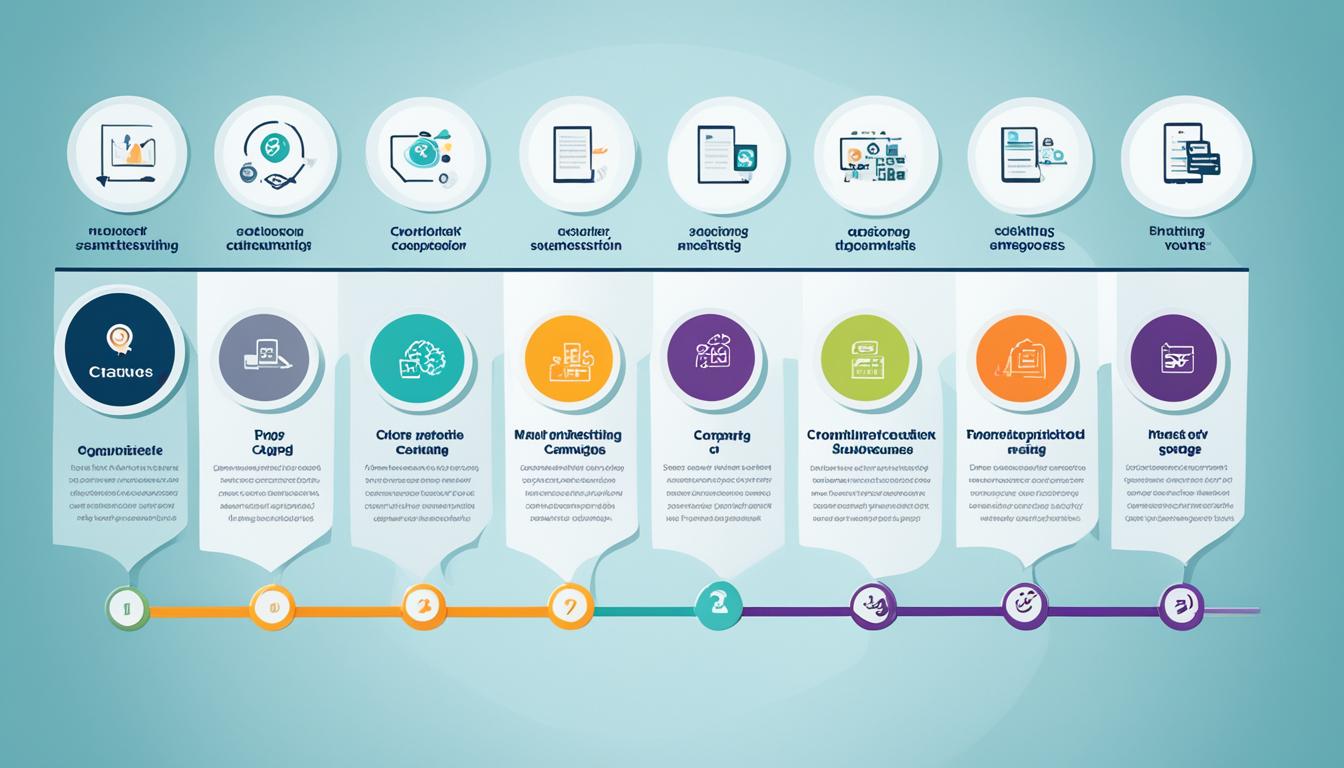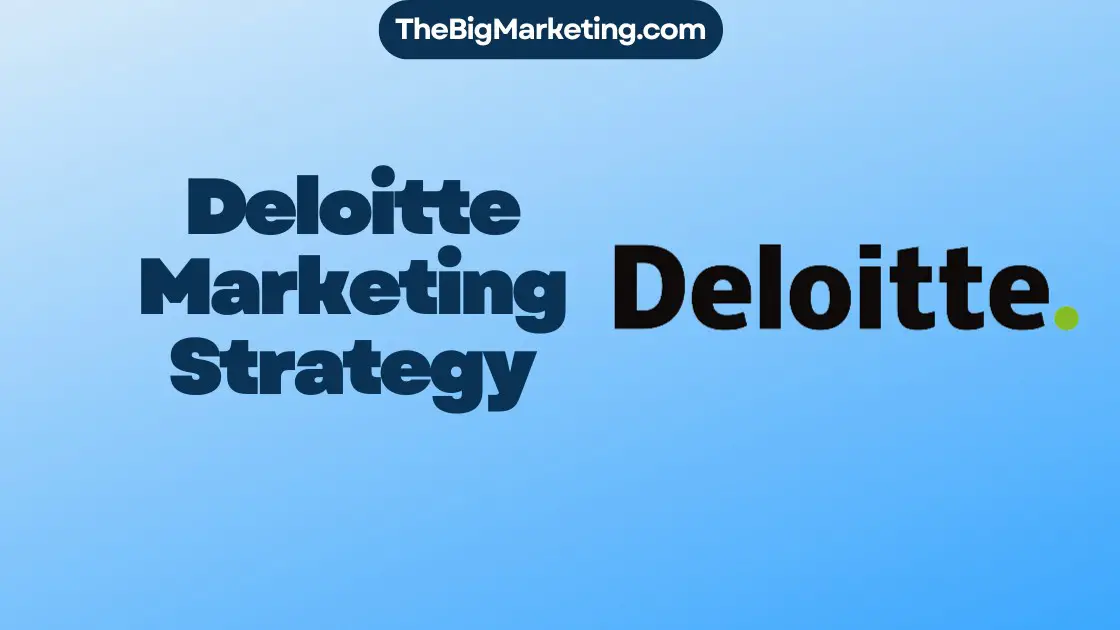Crowdsourcing in marketing refers to the practice of obtaining ideas, information, and opinions from a large group of people, typically through online platforms or social media. It allows companies to tap into the expertise and diverse perspectives of the crowd, leading to cost savings, increased innovation, and stronger customer engagement. Crowdsourcing has become increasingly important in the digital age, shaping marketing campaigns and strategies.
Key Takeaways:
- Crowdsourcing in marketing involves obtaining ideas, information, and opinions from a large group of people through online platforms or social media.
- Companies can benefit from cost savings, increased innovation, and stronger customer engagement by leveraging the expertise and diverse perspectives of the crowd.
- Crowdsourcing has become essential in the digital age, shaping marketing campaigns and strategies.
What is Crowdsourcing?
In the world of digital marketing, crowdsourcing has emerged as a powerful tool for companies to engage with their target audience, gather valuable insights, and unleash the collective creativity of a large group of people.
Crowdsourcing, at its core, involves soliciting ideas, information, and opinions from the public to improve products and services. It allows companies to tap into the diverse perspectives and expertise of a crowd, enabling them to make more informed decisions and create innovative marketing campaigns. By leveraging the power of the crowd, companies can benefit from expedited production, cost savings, and a wider range of ideas, without the need to hire additional employees.
With crowdsourcing, companies can enhance their digital marketing efforts by engaging customers and involving them in the process. By actively seeking customer input and incorporating their ideas into marketing strategies, companies can ensure their campaigns resonate with their target audience and drive impactful results.
Crowdsourcing has become increasingly crucial in the digital marketing landscape. It allows companies to gain valuable insights into consumer preferences and trends, helping them stay ahead of the competition. By embracing crowdsourcing, companies can harness the collective wisdom of the crowd to inform their marketing decisions and drive innovation.
To better understand the importance of crowdsourcing in marketing, let’s explore some examples of successful crowdsourced campaigns and strategies.
Benefits of Crowdsourcing in Marketing
| Benefits | Description |
|---|---|
| Enhanced Innovation | Crowdsourcing allows companies to tap into the collective creative potential of a large group, leading to the generation of innovative ideas and solutions. |
| Cost Savings | By leveraging the crowd’s expertise and insights, companies can save costs by avoiding the need to hire additional employees or consulting agencies. |
| Diverse Perspectives | Crowdsourcing enables companies to gather a wide range of perspectives and ideas from individuals of various backgrounds, leading to more inclusive and comprehensive marketing strategies. |
| Increased Engagement | By involving the crowd and incorporating their ideas into marketing campaigns, companies can create a sense of ownership among customers, leading to increased engagement and brand loyalty. |
Crowdsourced Marketing
Crowdsourced marketing is a powerful approach that involves the active participation of the public in the creation of marketing materials. This collaborative process allows companies to tap into the collective creativity and opinions of the crowd, resulting in interactive and engaging campaigns.
One of the main aspects of crowdsourced marketing is the involvement of customers in the submission and voting of materials. For example, companies may invite their customers to contribute ideas for a new logo, slogan, or ad concept. The submitted materials are then made available for public voting, ensuring that the final selection is driven by the preferences and opinions of the target audience. This approach not only fosters a deeper level of customer engagement but also creates a sense of ownership and connection between the brand and its consumers.
By leveraging crowdsourcing marketing campaigns, companies can benefit in various ways. Firstly, crowdsourced marketing can lead to significant cost savings, as the company does not have to rely solely on in-house creative teams or external agencies for the development of marketing materials. Instead, they harness the creativity and talents of their customers and the wider public.
In addition to cost savings, crowdsourced marketing strategies offer companies the opportunity to tap into diverse perspectives and innovative ideas. By involving a vast pool of contributors, companies can access a wealth of unique and cutting-edge concepts that may not have been possible through traditional marketing approaches. This allows for increased creativity, originality, and differentiation in campaigns, helping brands stand out in today’s highly competitive landscape.
Furthermore, crowdsourced marketing can lead to a stronger emotional connection between the brand and its customers. By involving the public in the creative process, companies demonstrate a willingness to listen, value customer opinions, and engage in a genuine dialogue. This fosters a sense of loyalty, trust, and advocacy among customers, which can translate into long-term brand loyalty and increased customer retention.
To illustrate the impact of crowdsourced marketing, let’s take a look at a successful example:
| Company | Campaign | Description |
|---|---|---|
| Starbucks | White Cup Contest | In 2014, Starbucks invited customers to decorate their iconic white cups and share the designs on social media using the hashtag #WhiteCupContest. Thousands of customers participated, and the winning design was showcased on limited-edition Starbucks cups. This campaign exemplifies how crowdsourced marketing can drive customer engagement and generate buzz around a brand. |
In conclusion, crowdsourced marketing is an effective strategy that enables companies to harness the collective wisdom, creativity, and expertise of the crowd. By involving the public in the creation of marketing materials, brands can save costs, access diverse perspectives, and create engaging and impactful campaigns. Crowdsourced marketing has become increasingly important in today’s digital age, shaping the way companies connect with their target audience and driving success in the dynamic and competitive marketing landscape.
Crowdsourcing Examples
Many companies have successfully implemented crowdsourcing in their marketing efforts. Here are some notable examples:
The Coca-Cola “Happiness Is” Campaign
The Coca-Cola Company launched a crowdsourcing campaign called “Happiness Is” where they invited consumers to submit photos showcasing moments of happiness. The selected photos were featured on Coca-Cola’s billboards, online platforms, and in print advertisements, creating a powerful emotional connection with their customers and emphasizing their brand message of happiness.
Lay’s “Do Us a Flavor” Contest
Lay’s, a popular snack brand, ran the “Do Us a Flavor” contest, asking consumers to suggest new potato chip flavors. The campaign generated thousands of flavor ideas and allowed Lay’s to engage directly with their customers. The winning flavor, determined through public votes, was then produced and sold as a limited edition, creating excitement and buzz around the brand.
Starbucks “White Cup Contest”
Starbucks launched the “White Cup Contest,” where they encouraged customers to decorate their white Starbucks cups and share their designs on social media using the hashtag #WhiteCupContest. The winning design was then featured on a limited edition reusable cup. This campaign not only showcased the creativity of Starbucks’ customers but also increased brand awareness and customer engagement on social media.
LEGO Ideas
LEGO created the platform LEGO Ideas, which allows fans to submit their original LEGO set designs. If a design receives 10,000 votes, the LEGO review board evaluates it for potential production. This crowdsourcing approach enables LEGO to tap into the creativity and passion of their fan community while offering fans the opportunity to see their designs become actual LEGO sets.
| Company | Campaign | Description |
|---|---|---|
| The Coca-Cola Company | Happiness Is | Crowdsourced photos showcasing moments of happiness |
| Lay’s | Do Us a Flavor | Crowdsourced potato chip flavor ideas |
| Starbucks | White Cup Contest | Crowdsourced designs for Starbucks cups |
| LEGO | LEGO Ideas | Crowdsourced LEGO set designs |
How to Crowdsource
Implementing crowdsourcing in marketing campaigns involves several steps:
- Define your objective: Determine the specific goal you want to achieve through crowdsourcing. Whether it’s generating new ideas, designing marketing materials, or gathering feedback, a clear objective will guide your crowdsourcing efforts.
- Choose the right platform: Select a suitable crowdsourcing platform that aligns with your target audience and campaign requirements. Research and compare different platforms to find the one that offers the features and functionality you need.
- Create a compelling brief: Craft a detailed brief explaining the project requirements, guidelines, and any constraints. Clearly communicate what you’re looking for and provide examples or references to give contributors a clear understanding of your expectations.
- Promote your campaign: Spread the word about your crowdsourcing campaign through various marketing channels. Utilize social media, email marketing, and online communities to reach a wider audience and attract more participants.
- Engage with participants: Actively interact with contributors throughout the crowdsourcing process. Provide feedback, answer questions, and acknowledge their contributions to foster engagement and create a positive experience.
- Evaluate and select submissions: Review and evaluate the submissions based on your predefined criteria. Select the most suitable entries that align with your campaign’s objectives and consider involving the community in the selection process through voting or rating systems.
- Reward and recognize contributors: Show appreciation for the participants’ efforts by acknowledging their contributions and providing incentives or rewards. This can encourage continued engagement and build a stronger relationship with your crowd.
- Implement and analyze: Implement the chosen submissions into your marketing campaign and track the performance and impact. Monitor the results and gather insights to inform future marketing strategies.
By following these steps, you can effectively leverage crowdsourcing to enhance your marketing campaigns and strategies, tapping into the collective creativity and expertise of your target audience.
Crowdsourcing Sites
When it comes to implementing crowdsourcing in marketing campaigns, there are various online platforms available that offer a wide range of features and opportunities for companies. These platforms act as intermediaries, connecting companies with a diverse pool of contributors who can provide valuable ideas, content, and feedback. By leveraging the power of crowdsourcing sites, companies can tap into the collective intelligence and creativity of the crowd to enhance their marketing strategies.
Here are some popular crowdsourcing platforms for marketing:
- 1. Designhill: Designhill is a leading crowdsourcing platform that specializes in graphic design. Companies can launch design contests and receive submissions from a global community of designers. With options to crowdsource logos, packaging designs, and more, Designhill provides a convenient way to access high-quality design solutions.
- 2. Tongal: Tongal focuses on crowdsourcing video-based content. It connects companies with a network of talented filmmakers, videographers, and animators who can help create engaging video campaigns. Tongal’s platform streamlines the creative process, enabling brands to tap into the gig economy and produce impactful video content.
- 3. Openideo: Openideo is a crowdsourcing platform that emphasizes collaborative problem-solving. Companies can leverage Openideo’s community to address social challenges and develop innovative marketing campaigns. By engaging with a diverse range of perspectives, companies can create campaigns that resonate with their target audience and drive positive change.
- 4. Kickstarter: While primarily known as a crowdfunding platform, Kickstarter also offers opportunities for crowdsourcing marketing campaigns. By launching a project on Kickstarter, companies can involve the public in the creation and funding of innovative marketing ideas. This platform provides a unique way to engage with potential customers and generate buzz around new products or services.
These crowdsourcing sites not only provide access to a vast talent pool but also offer tools and resources that streamline the crowdsourcing process. By utilizing these platforms, companies can harness the collective power of the crowd and drive successful marketing campaigns.
| Crowdsourcing Platform | Key Features |
|---|---|
| Designhill | Specializes in graphic design; allows companies to launch design contests and receive submissions from a global community of designers |
| Tongal | Focuses on video-based content; connects companies with talented filmmakers, videographers, and animators |
| Openideo | Emphasizes collaborative problem-solving; helps companies address social challenges and develop innovative marketing campaigns |
| Kickstarter | Primarily a crowdfunding platform; offers opportunities for crowdsourcing marketing campaigns and engaging with potential customers |
Crowdsourcing Jobs
Crowdsourcing provides job opportunities for individuals who wish to participate in various projects. These jobs can range from small tasks to larger projects and can be found on crowdsourcing platforms that connect companies with freelancers or individuals looking to contribute their skills.
Some popular crowdsourcing job platforms include:
- Gigster
- Freelancer
- Upwork
- Fiverr
These platforms allow companies to post projects and tasks, and individuals can offer their services and submit proposals or bids. By joining these crowdsourcing platforms, individuals can access a wide range of job opportunities in marketing and other industries.
Whether it’s designing a logo, creating content, or developing a marketing strategy, crowdsourcing platforms provide a space for companies to connect with skilled individuals who can contribute their expertise to marketing campaigns. From graphic design to social media management, crowdsourcing platforms offer a diverse range of job opportunities in the field of marketing.
Advantages and Disadvantages of Crowdsourcing
Crowdsourcing in marketing offers numerous benefits that can greatly impact a company’s success. Let’s explore some of the advantages:
- Increased Creativity: By tapping into the collective wisdom and creativity of a diverse crowd, companies can generate innovative marketing ideas that may not have been possible with a limited in-house team.
- Cost Savings: Crowdsourcing eliminates the need for hiring additional employees or outsourcing to expensive agencies. Companies can leverage the skills and expertise of the crowd, often at a fraction of the cost.
- Enhanced Engagement: Involving the crowd in the marketing process fosters a sense of ownership and engagement among customers. They become advocates for the brand and are more likely to share and promote the marketing materials they contributed to.
- Access to Diverse Perspectives: Crowdsourcing enables companies to gather insights and ideas from a wide range of individuals with different backgrounds and experiences. This diversity provides fresh perspectives and helps avoid biases.
- Efficient Resource Allocation: Crowdsourcing allows companies to allocate resources effectively by focusing on core competencies while outsourcing specialized tasks to the crowd, optimizing productivity and output.
Despite its many advantages, it is essential to consider some potential disadvantages of crowdsourcing in marketing:
- Lack of Control: When involving the crowd, companies relinquish some control over the marketing process. This can lead to inconsistencies in brand messaging or the submission of irrelevant or low-quality content.
- Time Constraints: Crowdsourcing marketing materials may require more time, as companies need to sift through numerous submissions to find the most suitable ones. This can impact project timelines, especially when quick turnaround is necessary.
- Quality Control: Ensuring the quality of crowdsourced content can be challenging. There is a risk of receiving subpar submissions that do not meet the company’s standards or align with the desired messaging.
- Intellectual Property Concerns: Companies must carefully manage intellectual property rights when crowdsourcing marketing materials. Establishing clear guidelines and ownership agreements is crucial to avoid potential legal issues.
- Loss of Confidentiality: Crowdsourcing may involve sharing sensitive information or trade secrets with the crowd. Companies must take appropriate measures to protect their confidential data and ensure only authorized individuals have access to it.
While crowdsourcing offers significant benefits, companies must weigh the advantages against the potential drawbacks before fully embracing this approach in their marketing strategies.
What Are the Main Types of Crowdsourcing?
Crowdsourcing in digital marketing and crowdsourcing marketing campaigns can take on various forms. Let’s explore the four main types of crowdsourcing:
1. Idea Generation and Innovation
Companies can crowdsource ideas and innovative solutions from customers, employees, or the general public. This type of crowdsourcing harnesses the collective creativity and expertise of the crowd to generate new concepts, products, or business strategies. By involving external contributors, companies can tap into diverse perspectives and unlock unique breakthroughs.
2. Content Creation
Crowdsourcing in content creation allows companies to leverage the skills and knowledge of the crowd to produce various types of content, such as videos, articles, images, or social media posts. By engaging the crowd, companies can source high-quality content while generating buzz and fostering a sense of community among contributors.
3. Funding and Investment
Crowdfunding platforms exemplify this type of crowdsourcing, where individuals contribute funds to support projects, startups, or social causes. By tapping into the collective financial resources of the crowd, entrepreneurs and organizations can bring their ideas to life and fund their initiatives. This type of crowdsourcing has revolutionized the way businesses secure funding.
4. Data Collection and Analysis
Crowdsourcing can also be utilized to collect and analyze vast amounts of data. Companies can crowdsource tasks such as data labeling, annotation, or sentiment analysis to obtain valuable insights and improve their decision-making processes. This approach allows companies to handle large-scale data projects efficiently while benefitting from the collective intelligence of the crowd.
Incorporating these different types of crowdsourcing into digital marketing strategies and campaigns can offer numerous advantages, including increased innovation, reduced costs, enhanced customer engagement, and improved efficiency.
Conclusion
Crowdsourcing has revolutionized marketing by harnessing the collective wisdom, creativity, and expertise of a large group of people. By involving the crowd in the marketing process, companies can tap into a diverse range of ideas, perspectives, and insights, leading to cost savings, increased innovation, and stronger customer engagement.
From crowdsourcing marketing materials to leveraging the crowd’s feedback and ideas, companies can create more impactful and innovative campaigns that resonate with their target audience. This collaborative approach not only helps companies save costs but also fosters a sense of community and brand loyalty among customers.
In the highly competitive marketing landscape, embracing crowdsourcing in marketing strategies is essential for success. By empowering the crowd, companies can drive increased customer engagement, build brand trust, and stay ahead of the competition. Crowdsourcing in marketing has become an indispensable tool for companies looking to leverage the power of the crowd in the digital age.



